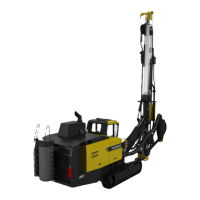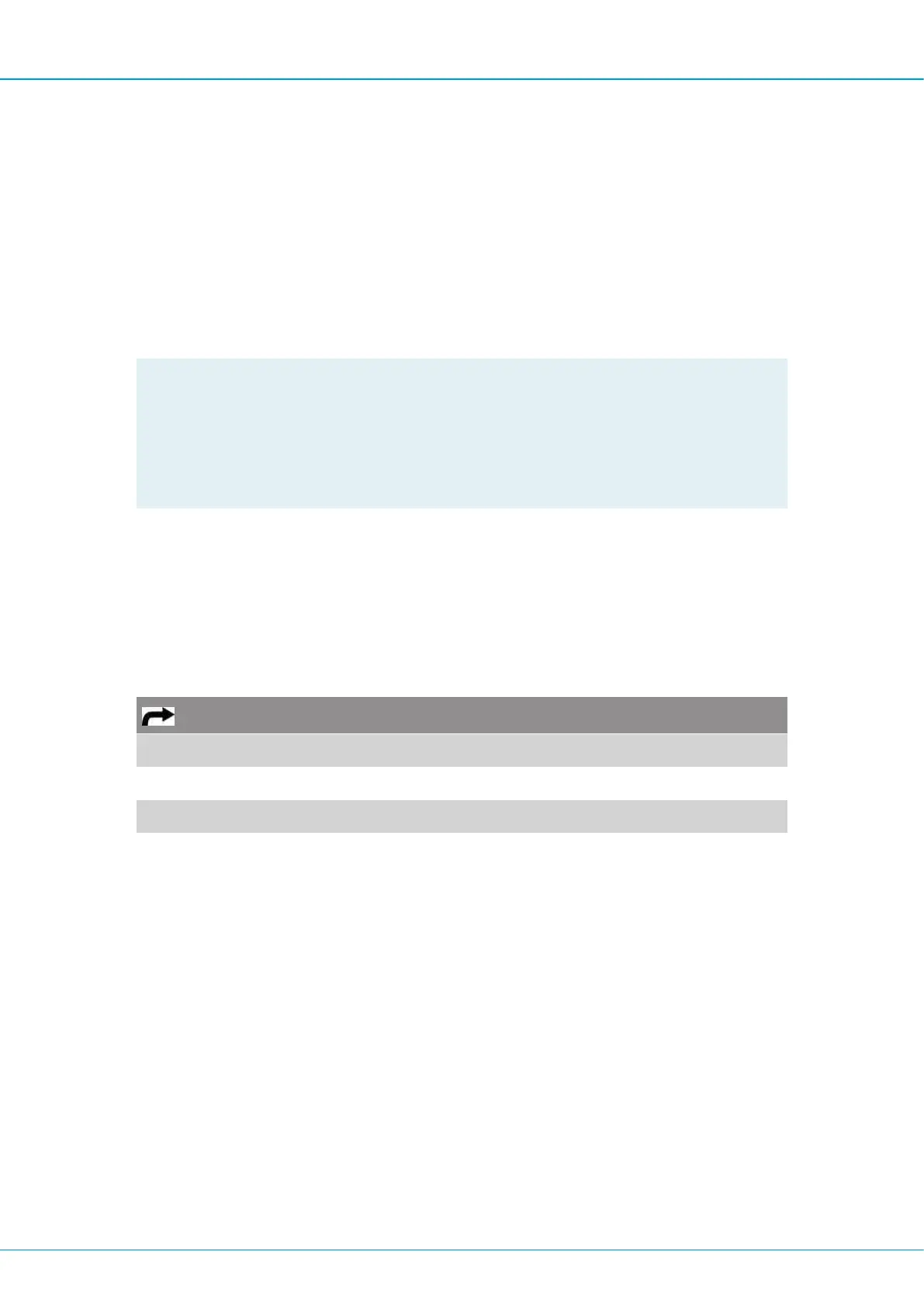SmartROC D65 Tier 4 Final 12 Compressor and air system
177
5.
Fill the air receiver until the oil level reaches the filler pipe. The indicator on the gauge
(1) must be in the upper section of the green zone. Make sure that no dirt falls down
into the system. Fit and tighten the filler plug once again.
6.
Operate the unit without any load for several minutes in order to circulate the oil and
force out any air in the oil system.
7.
Stop the compressor. Allow the oil to settle for several minutes. Check that the sys-
tem is depressurised. Unscrew the filler plug (2) and fill with oil until the indicator on
the oil level gauge (1) is once again in the green zone. Fit and tighten the filler plug
once again.
!
NOTE: If the oil has been destroyed due to the use of incorrect oil or excessive tem-
perature, or overextended operating time following the latest change, then the system
must be flushed clean before new oil is filled. See "Changing to new type of oil" for the
method.
NOTE: Never fill with too much oil. Overfilling results in high oil consumption. Take
care to use the correct oil grade". See "Recommended oils and lubricants".
12.3.6 Changing to new type of oil
To avoid problems when changing to a new type of oil (see table below), a special proced-
ure for compressor oil flushing must be followed. The table is only applicable if the re-
placed oil has not passed its expiration date. Old oil is best detected by using an analysis
program for oil samples, SOS (Scheduled Oil Sampling). Indications that the oil is old are
that it smells strongly, that there are contaminants such as sediments inside the oil reser-
voir and the stop valve, or that the oil has a brownish colour.
Paroil M Paroil S Paroil Sxtreme
Paroil M drainage* flushing flushing
Paroil S drainage** drainage* drainage
Paroil Sxtreme drainage** drainage drainage*
* When changing to the same oil within the interval between changes, drainage is suffi-
cient. ** Change not recommended

